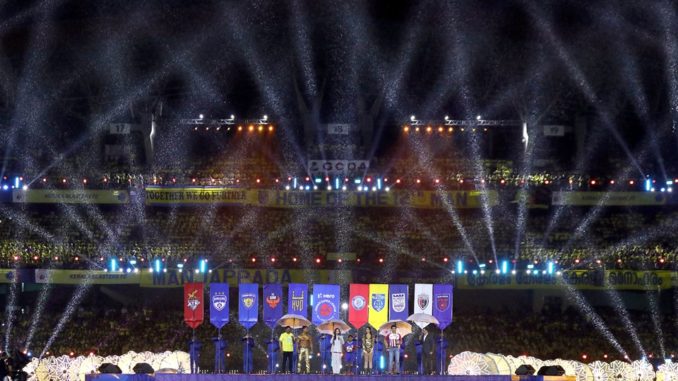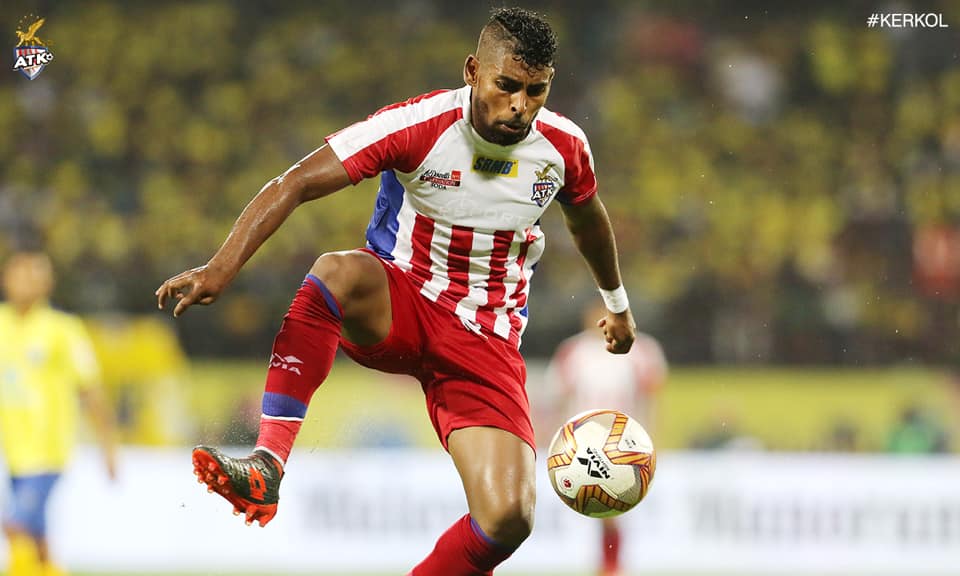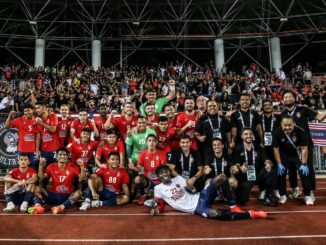
With their mood at a deflated low after their home World Cup qualification draw with subcontinent rivals Bangladesh, Indian football fans will have woken in better spirits two weeks ago after the news of domestic league reform that has been five years in the making.
But as a new era begins, is this truly the best course of action for the nation’s football?
Back in July The Asian Game spoke with Indian football personality Ankush Sharma and Minerva Punjab owner Ranjit Bajaj to discuss the state of Indian football, which had unequivocally hit a stalemate.
Five months on, the coming together of bitter foes has plotted a positive course ahead for the country’s domestic scene that continues to divide loyalties across India.
As was proudly announced by the AFC in mid-October, the domestic “roadmap” was a monumental turning point. Having in effect run two separate top-tier leagues for the past five years, the All Indian Football Federation brokered a hierarchy of sorts between the two interested parties; the hyped and ever flexible startup Indian Super League and the traditional national league incumbents the I-League.
It’s widely debated whether either or both are fully satisfied, yet given the AFC’s urgency to have a deal in place by the start of this season, a rushed agreement at the 11th hour was always going to be likely.
The deal itself outlines the Indian Super League as the country’s top-tier division for the first time, with an accompanying AFC Champions League qualification spot on offer. Plans for expansion in the short term will be subject to application but in the longer term (by 2024/25) promotion/relegation with the second-tier-bound I-League will provide a workable pyramid system.
To compensate for the I-League’s demotion, an AFC Cup playoff berth for the league champions will be granted as a consolation prize in the meantime.
Whether this will stem this bitterest of rivalries is another thing entirely.
The ISL’s evolution over the years spells it out clearly; originally run as a short three-month precursor to the I-League season, it morphed quickly into a direct competitor of the full domestic season.
From offering I-League players an additional bonus in playing time and salary, the ISL has now hoovered up all the top talent on a full time basis. You can see where the friction originated.
The ISL’s formation and uniqueness was based on the Indian Premier League model that succeeded so well in cricket. The names may have been more Z-list than their cricketing cousins, but the ISL ignited the same short, exciting tournament format that brought in the big crowds.
While the format has since stretched to resemble a regular domestic calendar, with the playing staff having become a little more predictable, the prime time kicks offs, and daily match days keep the league central to the watching audience in the stadium and back at home.
The I-League, in that regard, remains distinctly second rate. Overseas recruits are restricted, sponsorship money is fleeting, while television broadcasts remain a pale imitation of their richer ISL competitors. Mid-week 2pm kickoffs show the importance placed on their schedule, and the league remains distinctly old school, appealing to the purists over the mainstream.
There has been a team however that has bridged the gap. Bengaluru FC, a side still in its infancy since forming in 2013, were a beacon of light in the I-League, winning two titles and two Federation Cups over four years, whilst reaching the AFC Cup final in 2015.
Their switch to the ISL kick started the turning of the tide, as the competition moved to run in direct opposition to the I-League. Bengaluru continued their success into the ISL, finishing top in both regular seasons to date, offering clear routes for others to follow and gain a positive financial foothold with a continued healthy supporter base upon to transition successfully.
However, for every Bengaluru there are ever increasing numbers of ISL teams struggling to remain viable. This off-season alone saw the re-branding and relocation of two clubs in key city demographics.
Delhi Dynamos were forced to move more than 1500km to Bhubaneswar and re-branded Odisha FC thanks to spiraling stadium costs, while Pune City collapsed entirely due to financial irregularities, effectively uprooting staff and resources to the newly formed Hyderabad FC.
Two cases of overnight relocations, annexing any long term fans they may have had from their thoughts, in search of new pastures and financial stability.
That very concept however is pretty difficult to achieve in the ISL, with Benglauru leading the way amongst a motley crew of dubious balance sheets. Propped up by hastily directed ownership donations whilst continually being hampered by the hefty league sign on fees, few clubs have any realistic chance of making it back over the course of the season.
This remains the big concern of many I-League fans, how can this sheer financial gap be bridged for promotion to work in the long term? India’s two largest clubs – Mohun Begun & East Bengal of Kolkata – will undoubtedly boast crowds on occasion this season of over 50,000 in India’s second-tier, but integrating them into the ISL may take time given the lack of backing currently at hand in the I-League.

One further point to consider would be whether they’d be adding themselves to an already saturated market place. ISL’s own Kolkata club ATK have been moderately successful in the early days of the league, but have had to evolve rapidly over the last half decade.
From a club built on Spanish roots, linked with Atletico Madrid no less, to a side cut adrift and in rebuild, picking up free agents from the A-League this off-season rather than selecting their share of Iberian stars from yesteryear.
The future, despite having a clear vision at long last, continues to look uncertain, notwithstanding where the national team fits in within the whole discussion.
Consistency, like with much of domestic football, is difficult to come by for India, and while they impressed in patches on the continental stage at January’s Asian Cup, expectations remain high going forward under new coach Igor Stimac.
India’s full roster now ply their trade in the ISL, and while players such as young midfield sensation Vinit Rai wax lyrical over the new league and the opportunities to play with and be mentored by high quality players/coaches, avenues to move elsewhere to higher quality leagues remain limited.
It may sound perverse, but the true barometer of the ISL’s long term success will likely be how many Indian players play abroad in five to ten years time.
This weekend’s news of expansion of the AFC Champions League from 2021 couldn’t have come at a better time for Indian football.
Optimism is starting to bubble internally, with a structure (finally), and a chance to regularly mix it at the highest level of continental play for the first time in their history, they’ll hope that a month that started with a drab draw against their regional rivals will ultimately be remembered as the pivotal month in which their footballing history moved forward.
Photos: ATK & Kerala Blasters Facebook
Listen to Ankush Sharma and Ranjit Bajaj discuss the issues between the Indian Super League and I-League on Episode 36 of The Asian Game podcast.




